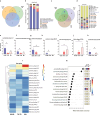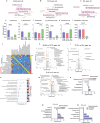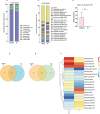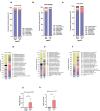Abnormalities in gut virome signatures linked with cognitive impairment in older adults
- PMID: 39676708
- PMCID: PMC11651276
- DOI: 10.1080/19490976.2024.2431648
Abnormalities in gut virome signatures linked with cognitive impairment in older adults
Abstract
Multiple emerging lines of evidence indicate that the microbiome contributes to aging and cognitive health. However, the roles of distinct microbial components, such as viruses (virome) and their interactions with bacteria (bacteriome), as well as their metabolic pathways (metabolome) in relation to aging and cognitive function, remain poorly understood. Here, we present proof-of-concept results from a pilot study using datasets (n = 176) from the Microbiome in Aging Gut and Brain (MiaGB) consortium, demonstrating that the human virome signature significantly differs across the aging continuum (60s vs. 70s vs. 80+ years of age) in older adults. We observed that the predominant virome signature was enriched with bacteriophages, which change considerably with aging continuum. Analyses of interactions between phages and the host bacteriome suggest that lytic or temperate relationships change distinctly across the aging continuum, as well as cognitive impairment. Interestingly, the phage-bacteriome-metabolome interactions develop unique patterns that are distinctly linked to aging and cognitive dysfunction in older adults. The phage-bacteriome interactions affect bacterial metabolic pathways, potentially impacting older adults' health, including the risk of cognitive decline and dementia. Further comprehension of these studies could provide opportunities to target the microbiome by developing phage therapies to improve aging and brain health in older adults.
Keywords: Virome; aging; cognition; dementia; gut; microbiome; phage.
Conflict of interest statement
Drs. Hariom Yadav is co-founder and chief scientific officer of Postbiotics Inc; and he is co-founder of BiomAge Inc, MusB LLC and MusB Research LLC with Dr. Shalini Jain. However, other authors have no conflict of interest in studies and results described in this manuscript.
Figures






References
-
- Langa KM. 2018. Cognitive aging, dementia, and the future of an aging population. In: Majmundar MK, Hayward MD, editors. Future directions for the demography of aging: Proceedings of a workshop. Washington (DC): National Academies Press. p. 75–20. - PubMed
MeSH terms
Grants and funding
LinkOut - more resources
Full Text Sources
Medical
